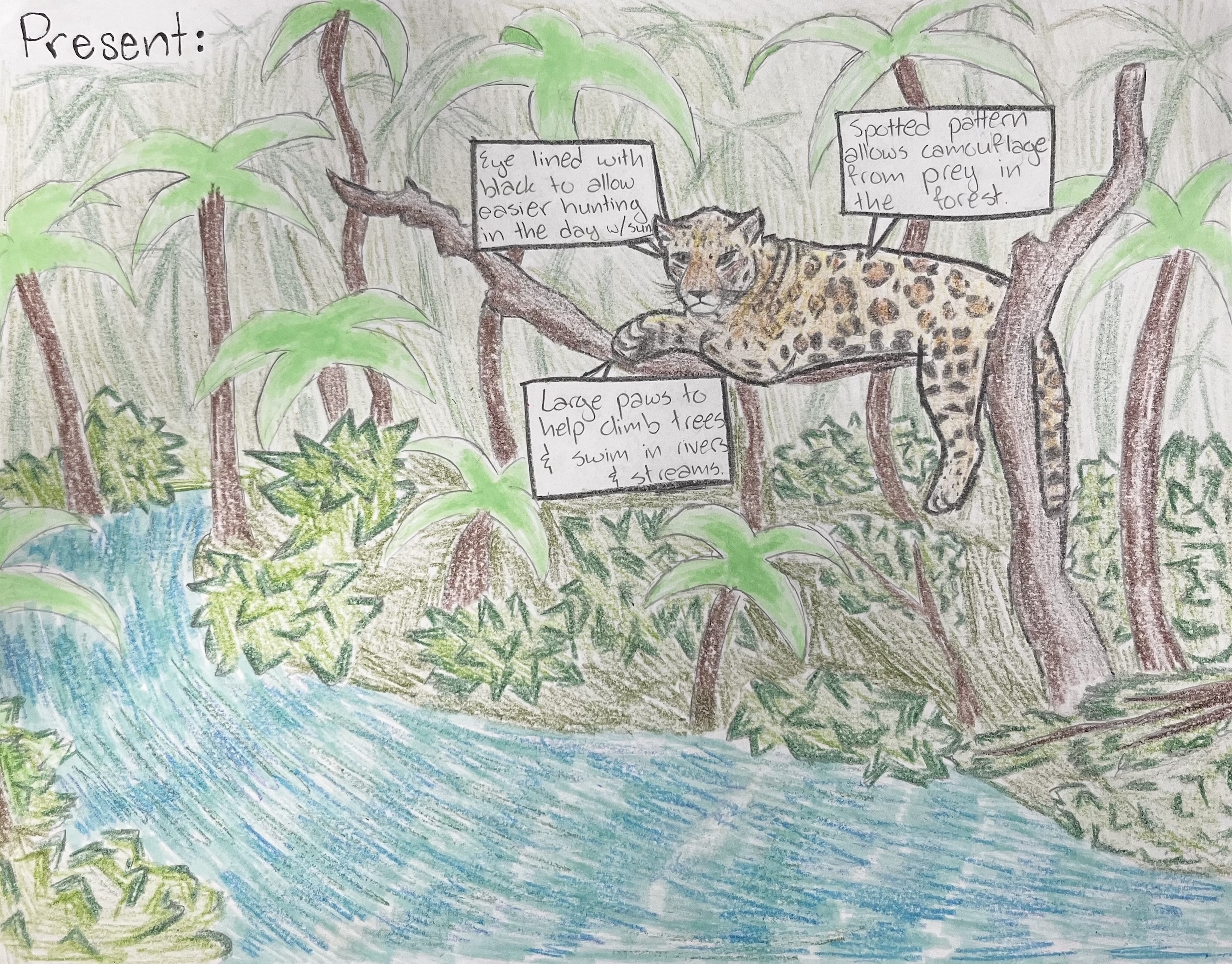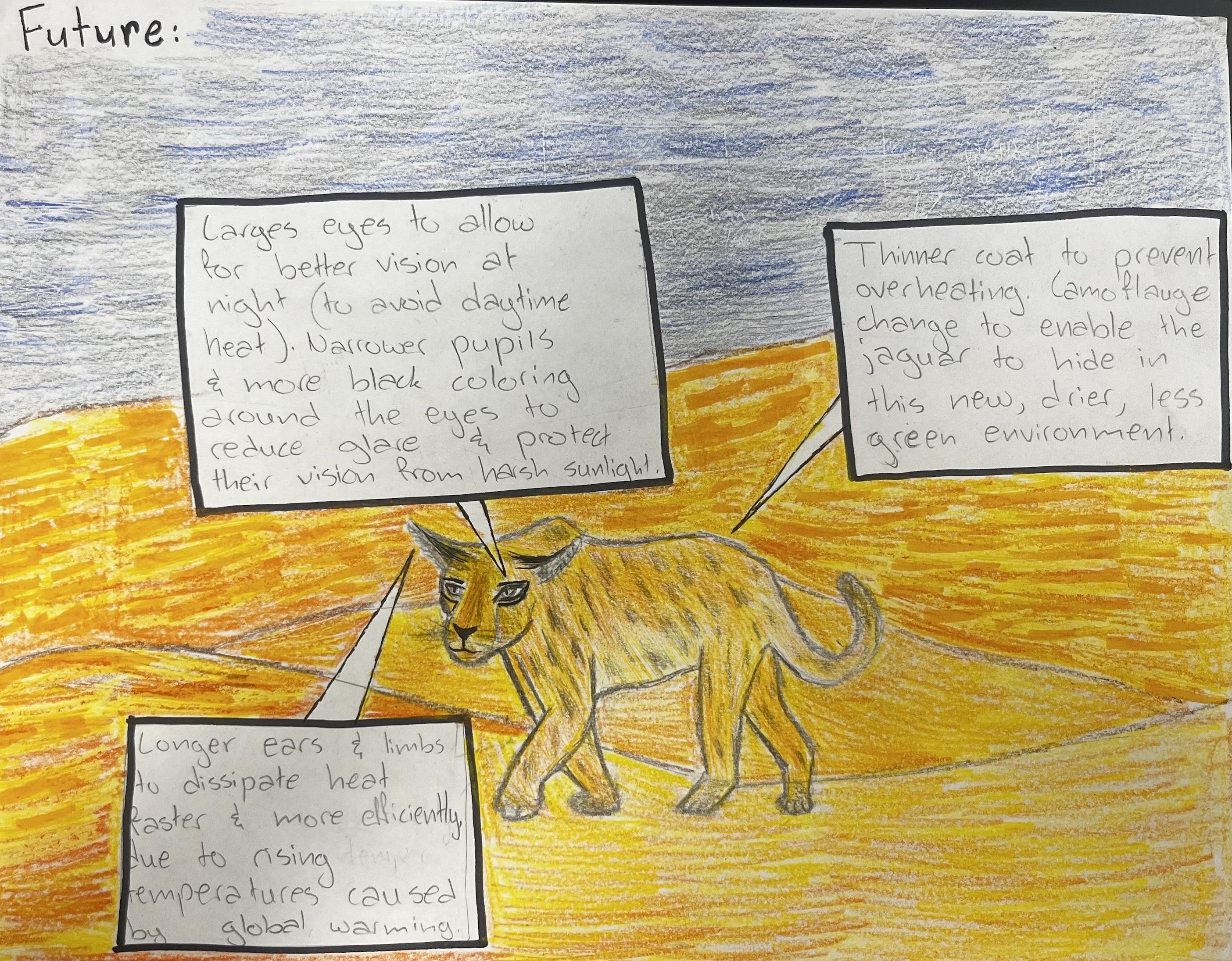The jaguar, a powerful apex predator, currently inhabits tropical rainforests, wetlands, and grasslands across Central and South America. Thriving in dense vegetation, jaguars rely on their uniquely colored fur for camouflage, their muscular build for powerful ambush hunting, and their strong jaws to crush bones and turtle shells. They are also skilled swimmers, often hunting in rivers for fish and more.
As climate change alters their environment, jaguars may face drier landscapes, rising temperatures, and habitat fragmentation. Future jaguars could evolve lighter, sand-colored fur for camouflage in arid regions. Longer limbs and larger ears might help with heat dissipation, while enhanced night vision could aid nocturnal hunting. They might adapt to avoid the daytime heat as much as they are able to. Prey scarcity may lead to a broader diet and more scavenging behavior. As their environment shifts, jaguars must adapt to survive in a rapidly changing world.
Contact us
Thank you for your interest in contacting Future Engineers. We look forward to connecting with you!
General Inquiries
support@futureengineers.orgSponsorship Inquiries
sponsor@futureengineers.org

